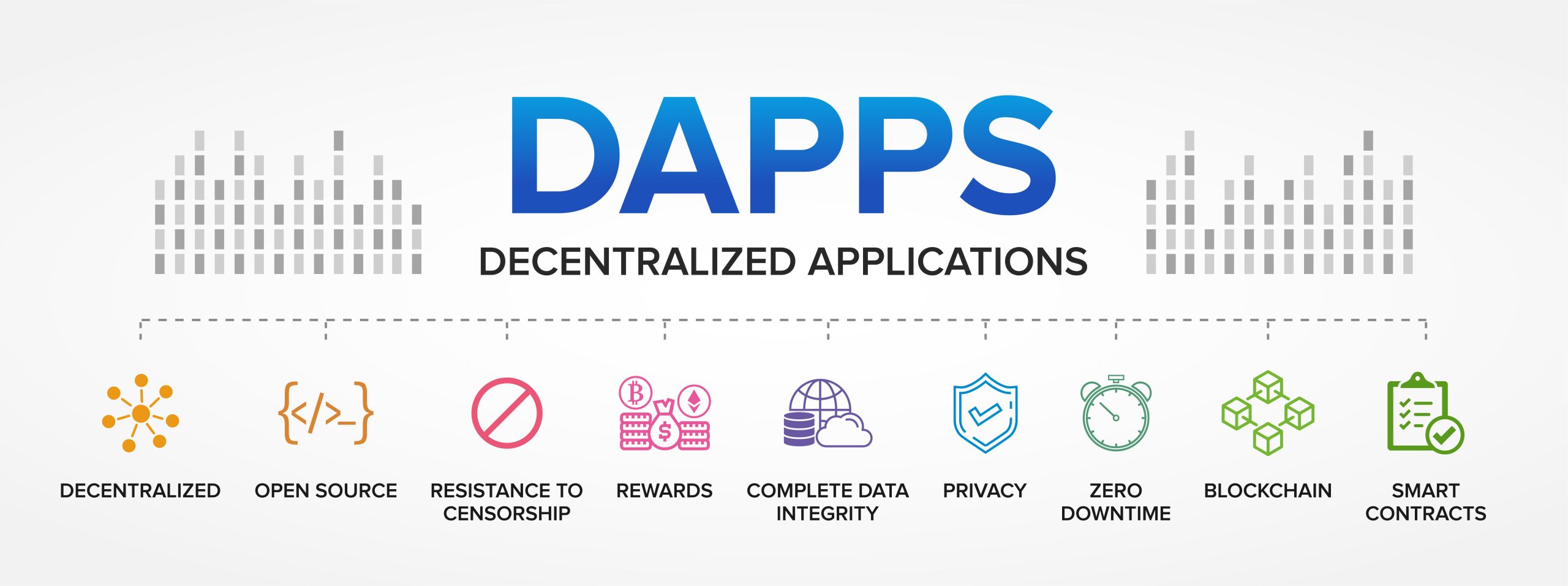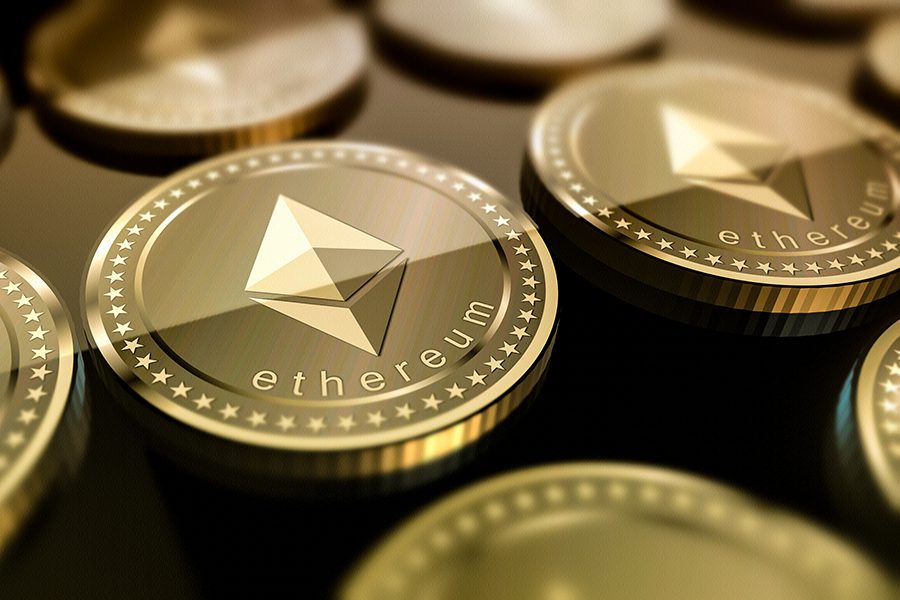Decentralized applications, commonly known as DApps, are one of the most exciting technologies to emerge from the blockchain revolution. DApps are digital applications or programs that exist on a blockchain or peer-to-peer network of computers instead of a single central server. This decentralized architecture brings advantages like censorship resistance, reduced risk of failure, and transparency over traditional apps. As blockchain adoption grows, so does the popularity and variety of dApps being created for industries from finance to gaming to healthcare. As blockchain adoption accelerates, so does the development and adoption of dApps across industries from finance to healthcare. This DApp development guide will walk through everything a blockchain developer needs to know.
What Is a DApp (Decentralized Application)?
A decentralized application or dApp has its backend code running on a decentralized peer-to-peer network instead of a centralized server. This backend is often implemented on a blockchain like Ethereum, EOS, or Tron, which provides benefits like tamper resistance, consensus mechanisms, and native cryptocurrencies.
Frontend code accesses the backend through an ABI (application binary interface). No centralized entity controls the app; it is open-source and autonomous. The definition of a true dApp requires it to have these key attributes:
- Open Source – Code must be open-source and auditable by anyone.
- Decentralized – Records are stored on a public, decentralized blockchain to avoid central points of failure.
- Incentivized – Validators of the blockchain are incentivized through cryptographic tokens.
- Algorithmic – Rules around dApp use are codified into smart contract logic.
- Transparent – Changes to the dApp operation must be agreed on by distributed consensus.
These technical principles enable decentralized apps to be transparent, tamper-proof, and operate autonomously. Instead of a central server and company running it, a dApp lives on the blockchain maintained by thousands of computers in the P2P network.

Dapp Use Cases
Decentralized apps can disrupt dozens of industries that currently rely on centralized platforms. As blockchain matures, dApps will continue emerging in new industries like transportation, energy, education, retail, and more. The decentralized model brings advantages in transparency, security, speed, and efficiency over legacy systems. Here are some leading use cases where dApp solutions make sense:
Finance
Digital wallets, lending, investing and trading platforms that connect users peer-to-peer. Removes the need for centralized intermediaries.
Gaming
Games with collectible assets, provably scarce items and transparent gameplay. Benefits include true digital ownership for players.
Identity
Secure digital identities and reputation systems outside the control of governments and corporations.
Social Media
Social networks, messaging, and digital content platforms with transparency, data privacy, and free speech.
Supply Chain
Improved tracking and accountability in supply chains by connecting participants directly without central intermediaries.
Healthcare
Health records management, insurance networks, and medical data analytics while preserving privacy.
Government
Voting systems, public registries and benefits programs. Transparent and tamper-proof.
Top 5 Platforms For DApp Development
There are several leading blockchain platforms used for dApp creation. Each offers its own strengths, like transaction speed, scalability, consensus model, native currencies, and more. The most popular today include:
Ethereum – The first programmable blockchain lets developers create dApps using smart contracts and the Solidity language. It has the largest dApp ecosystem currently.
EOS – Provides fast throughput and free transactions that are ideal for large-scale dApps. It also supports DeFi features.
Tron – Tron’s high performance and scalability make it suitable for dApps interacting with content like social media or gaming.
Tezos – Develop dApps with formal verification and proof of stake consensus. Has a robust upgrade process.
NEO – Uses a unique DBFT consensus algorithm and supports code in common languages like Java and Python.

DApp Development Key Features
Decentralized apps have some key technical features that differentiate them from traditional applications. These capabilities make decentralized apps uniquely suited for disrupting traditional industries reliant on central intermediaries. Users gain more control over their data, transactions, and interactions. Here are some of the key features for DApp Development:
- No central point of failure – With code running on a decentralized P2P network instead of centralized servers, dApps do not rely on a single provider. This increases robustness.
- Data transparency – Records are typically stored on a public ledger like a blockchain that provides transparency into application data and operations for users.
- User pseudonymity – Users engage with dApps through blockchain addresses that provide pseudonymity or anonymity in many cases.
- Platform autonomy – dApps operate based on programmed rules executed by the platform, minimizing reliance on subjective decisions by a small group of people.
- Immutability – Data like transaction history in dApps cannot be altered after being recorded on the blockchain, preventing tampering.
- Censorship resistance – No centralized entity can easily block users from accessing the application. Content cannot be easily removed without consensus.
Benefits Of DApp Development
While integrating blockchain does impose some drawbacks like complexity, dApps are disrupting a growing number of industries by leveraging some core differentiating benefits. Decentralized applications bring a wide range of advantages over their centralized counterparts. Here are some of the core benefits driving dApp adoption:
Increased Security
With no central point of failure, decentralized architecture minimizes security vulnerabilities. Blockchains themselves are extremely difficult for hackers to manipulate due to cryptographic protections.
Improved Privacy
User identities on dApps can be pseudonymous, and data transparency means users can better see how their data is used. This enables greater privacy over centralized platforms.
Censorship Resistance
Content and transactions on dApps typically cannot be altered or blocked without distributed consensus on the underlying blockchain. This enables censorship resistance.
Lower Fees
By connecting users directly with no intermediary, fees are reduced in many dApp use cases like banking, remittances and marketplaces.
Speed
Blockchain-based architectures in many dApps enable faster transaction settlement, product delivery and information transfer relative to legacy systems.
Transparency
With data availability through public ledgers and open source code, dApps provide unparalleled transparency into application operation and use of personal data.
Innovation
The composability of dApps promotes innovation by allowing them to be freely combined and built off each other as open platforms.
Examples of Decentralized Apps
As the technology matures, decentralized apps across industries like gaming, identity, voting, file storage, and more will grow exponentially. Here are some of the most successful decentralized apps deployed currently:
Uniswap – Leading decentralized exchange for cryptocurrency trading without intermediaries. Runs on Ethereum.
MakerDAO – Stablecoin and decentralized lending/borrowing platform enabling advanced DeFi transactions.
dYdX – Margin trading and derivatives platform for crypto assets using smart contracts on Ethereum.
Audius – Decentralized streaming service that connects artists and listeners directly.
VeChainThor – Enterprise blockchain dApp platform for supply chains, product authenticity, medical records, and more.
Decentraland – Virtual world metaverse where users can create, experience, and monetize content and applications.
Steemit – Blockchain-based social media platform that incentivizes users to share content.
Golem – Enables users to rent out spare computing resources and pay for computation in a decentralized sharing economy.
Decentralized Application (DApp) Development Process – Step by Step
Now that you understand the fundamentals of dApps and their benefits let’s go through the typical development process step-by-step:
1. Identify Application Goals
Like any software project, the dApp development process starts with defining what your decentralized app aims to accomplish. Determine what problem it will solve, who the target users are, and what features and functionality it will have. Establish clear goals and use cases that will guide the build.
2. Select a Blockchain Platform
Next, choose which blockchain platform you will build the dApp on. Compare leading options like Ethereum, EOS, Tron, etc. based on factors such as transaction speed, scalability, costs, developer community and tools. Pick the platform that best aligns with your specific app goals.
3. Install Development Tools
Once the platform is selected, set up the necessary developer tools like SDKs, frameworks, libraries and clients that are required to build on that blockchain. For Ethereum, these include tools like Truffle, Ganache, Web3.js, Solidity, and MetaMask among others.
4. Design App Architecture
Plan out the architecture and different components of your dApp, such as smart contracts, web interface, APIs and databases. Map out how they will interact to deliver the intended user experience and functionality.
5. Code the Smart Contracts
This stage is where the “magic” happens in dApp development. Write smart contract code in Solidity (for Ethereum) that will execute business logic and handle computation/storage on the blockchain in a decentralized manner.
6. Build User Interface
Create a web or mobile app frontend with React, Vue.js, etc. that provides an intuitive interface for users to interact with the dApp easily through actions like invoking smart contract functions.
7. Test Extensively
Conduct extensive testing on factors like security, gas costs, performance and functionality. Tools like Mocha and Chai can automate smart contract testing. Be rigorous at this stage before mainnet deployment.
8. Deploy on Blockchain
With development and testing complete, deploy your dApp smart contracts onto the public blockchain network. This allows anyone to access and interact with the dApp through the transparent ledger.
9. Monitor and Upgrade
Post-launch, continuously monitor analytics and user feedback. Be prepared to quickly fix issues, release upgrades, and add new features based on learning and market needs.
Factors Affecting DApp Development
By making smart platform choices and following best practices in areas like design, security, and testing, you can navigate the challenges of blockchain dApp creation. Many technical and business considerations factor into building an effective dApp:
- Platform scalability – The blockchain must have the capacity to support expected usage volumes without congestion.
- Development costs – Platforms differ significantly in costs related to gas fees, storage and computation.
- User experience – UI/UX design must provide simple, intuitive access to dApp functions.
- Security – Smart contracts and accounts should follow best practices around keys, vulnerabilities and auditing.
- Community – An active developer community provides learning resources and support.
- Incentives – The tokenomic incentives designed into the dApp should drive engaged user activity.
- Legal compliance – Know regulations associated with your dApp’s jurisdiction and use case that must be accommodated.
- Testing – Extensive testing is vital for confirming functionality and finding issues before mainnet deployment.
- Documentation – Clear documentation helps users learn about interacting with your dApp and aids adoption.
- Upgrades – Ability to seamlessly add new features and fix issues through a structured upgrade process.
Conclusion
The world is just starting to grasp the disruptive potential of blockchain-based decentralized applications. As the technology evolves, dApps will transform industries by removing central intermediaries and returning control to users. This dApp development guide provided key insights into successfully designing, building, and launching decentralized applications.
Are you ready to leverage the power of decentralized applications? The expert blockchain developers at Canadian Software Agency can help you successfully build, launch, and scale dApps on platforms like Ethereum, Tron, and EOS. Get in touch today to discuss your project goals and let’s bring your innovative dApp ideas to reality!




